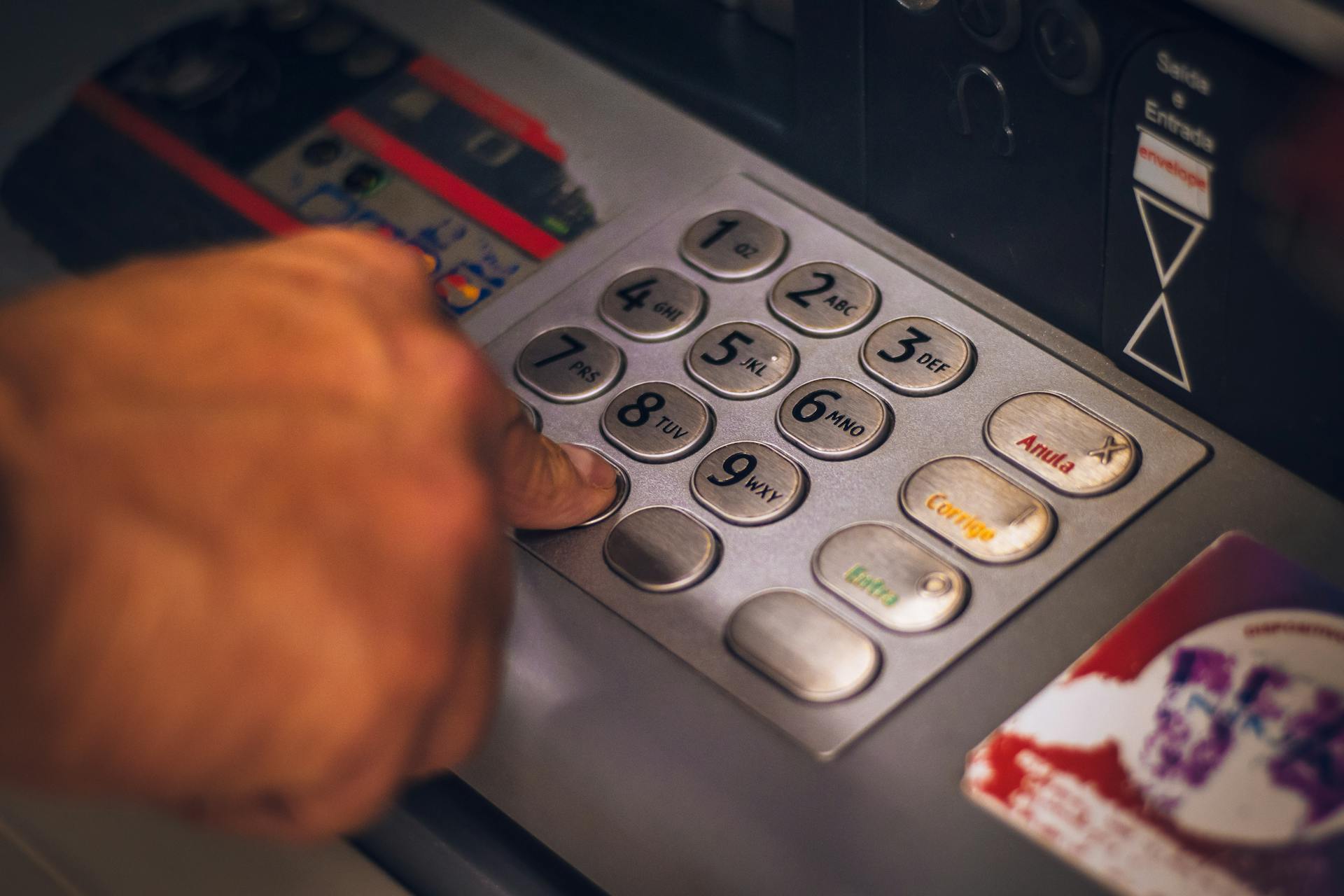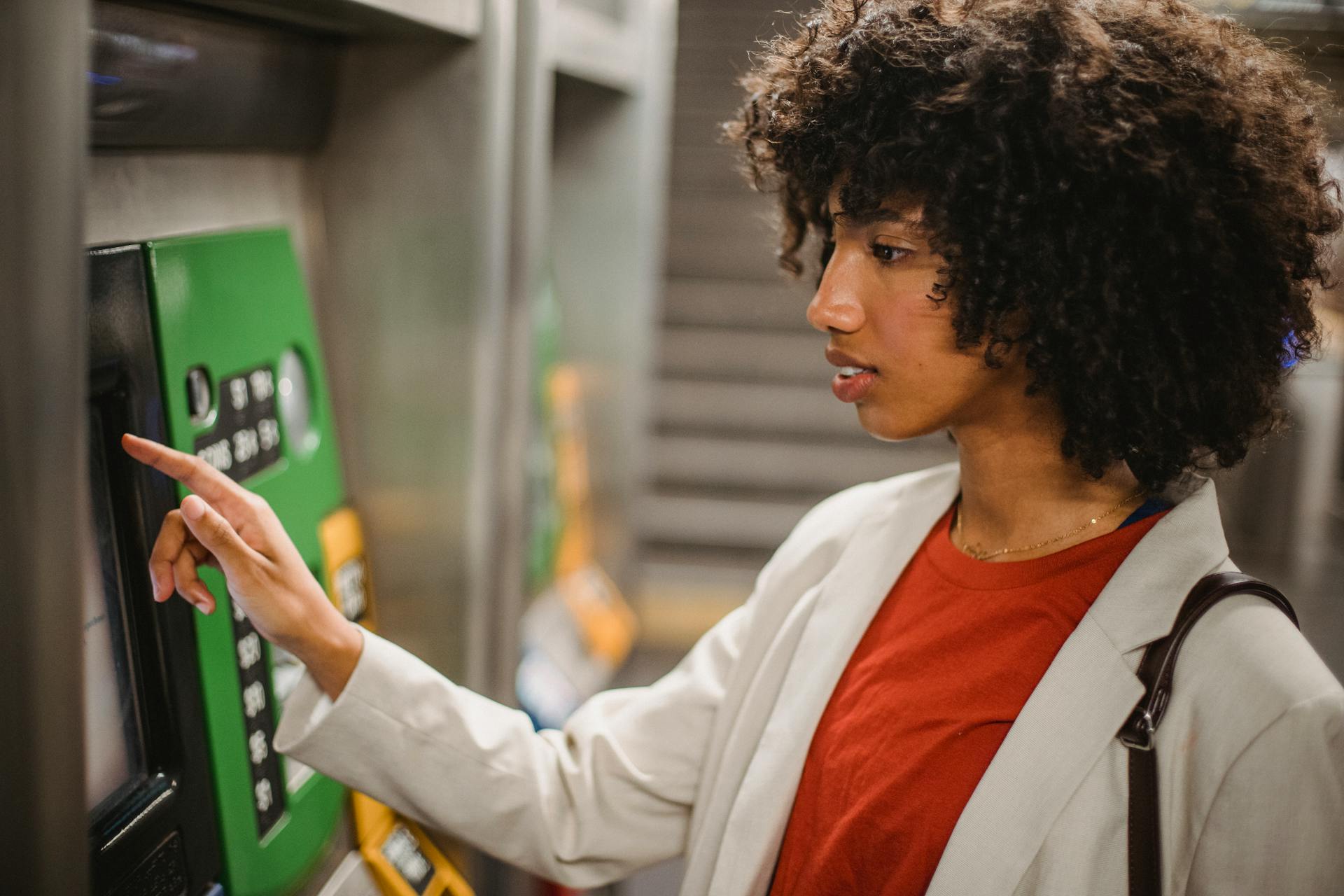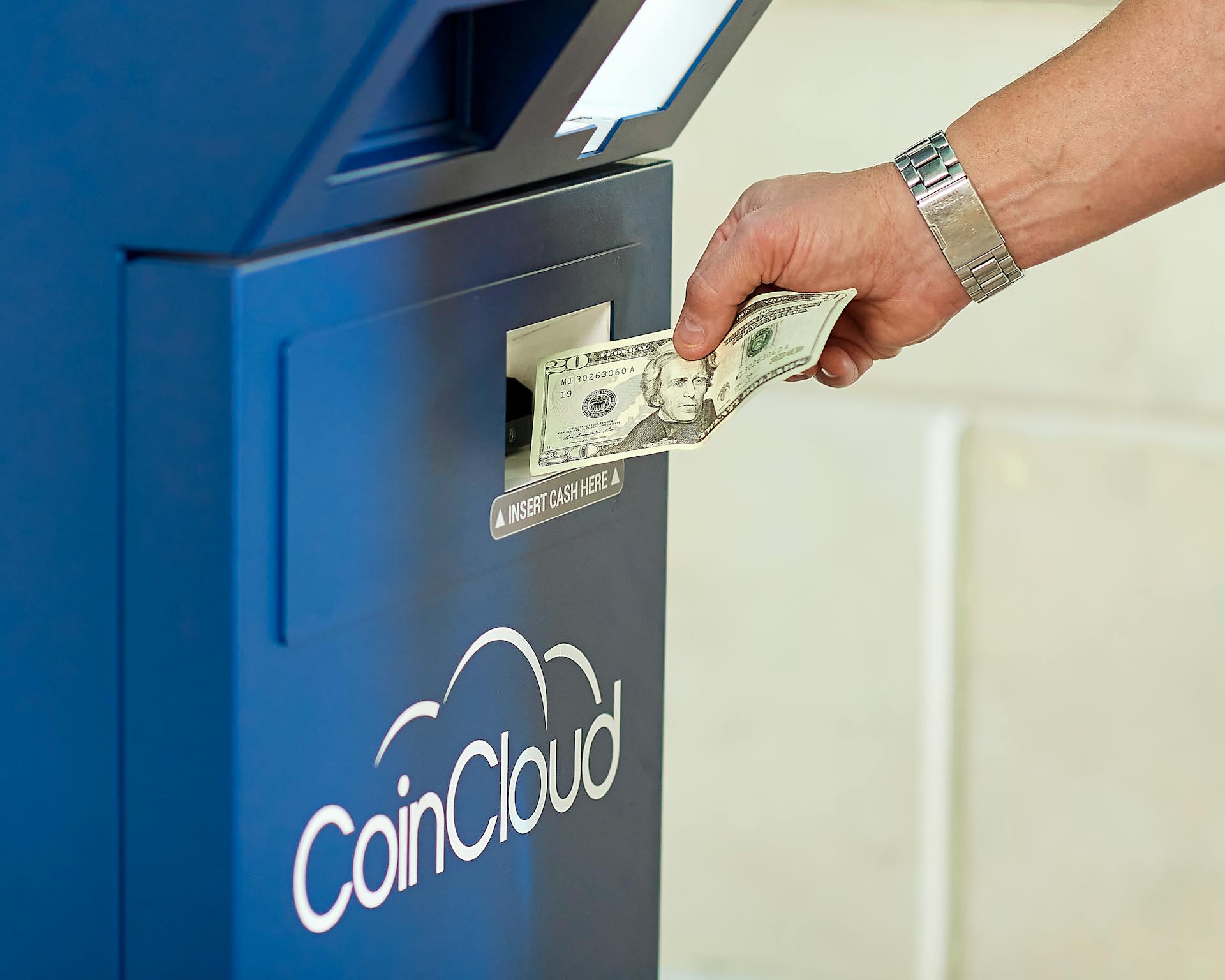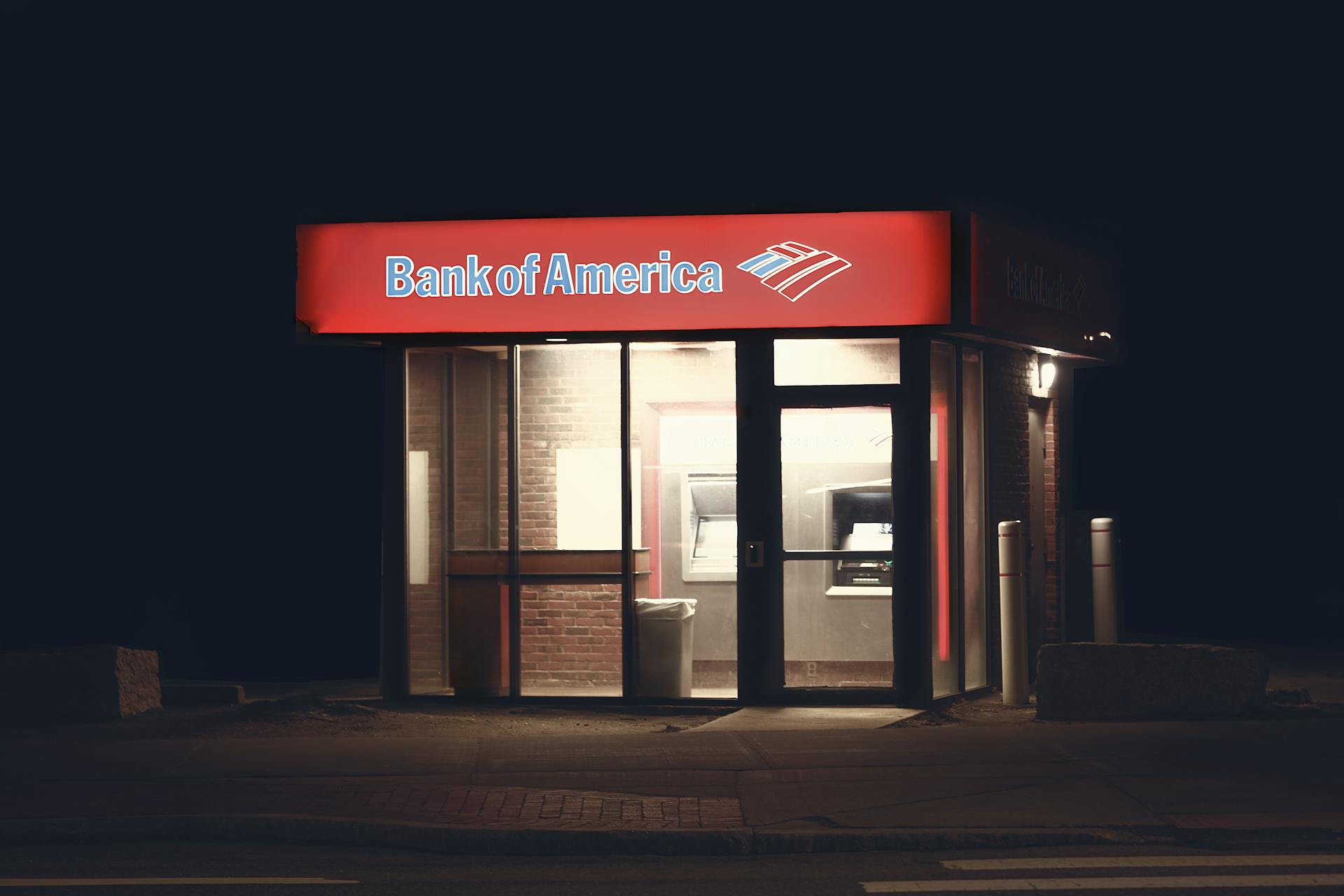
ATM malware can steal your card data, including your PIN, in a matter of seconds. This type of malware can be installed on an ATM's operating system, allowing hackers to access your card information.
Your card details can be stolen even if you use a secure ATM, as long as the malware is present. This is because the malware can intercept the data being sent between your card and the ATM.
You can protect yourself from ATM malware by being cautious when using ATMs, especially those that look tampered with or are located in isolated areas.
Vulnerabilities and Attack Methods
ATM jackpotting attacks are a type of malware-based attack that targets automatic teller machines. These attacks are often performed using sophisticated malware that allows cybercriminals to gain access to the ATM's internal computer.
The malware is typically inserted into the ATM's computer through a USB device or by sending SMS messages from a smartphone. This allows the attackers to remotely control the ATM and order it to dispense cash.
In some cases, attackers use professional surgical tools like endoscopes to locate the connection ports of the ATM. They may also dress up like ATM technicians to avoid suspicion.
The attackers can use various types of malware to carry out the attack, including black box malware and malware-based jackpotting attacks.
Here's a breakdown of the two main types of ATM jackpotting attacks:
To minimize the risk of falling victim to ATM jackpotting attacks, it's essential to follow some simple tips. These include using ATMs belonging to legitimate banks and financial institutions, avoiding ATMs set up by shopping malls and regular businesses, and checking bank statements monthly for unauthorized transactions.
ATM Attacks
ATM attacks can be a serious issue, but there are ways to protect yourself. Vigilant practices when using an ATM, such as visually inspecting the machine for abnormalities, covering the keypad while entering the PIN, and using ATMs in well-lit and secure locations, can help prevent scams.
Government legislation also protects ATM users, with the ATM Safety Act in New York State requiring certain ATM facilities to meet safety standards. This act applies to all Federal and State chartered banking institutions operating ATM facilities in the state.
If an ATM looks suspicious or displays an error message after inserting your card, do not re-enter your PIN and report it to the bank immediately. Be wary of anyone nearby offering help as they may be accomplices to the scam.
ATM jackpotting is a type of fraud where cybercriminals cash out ATMs using sophisticated malware. This type of attack targets the ATM's system, avoiding brute force to dispense cash.
Here are some tips to protect yourself from ATM jackpotting attacks:
- Use automatic teller machines belonging to legitimate banks and financial institutions.
- Avoid showing your PIN code to anyone behind you while withdrawing money from an ATM.
- Check your bank statements monthly for unauthorized transactions.
- Switch most operations to online banking and set appropriate cash withdrawal and operational limits.
Prevention and Protection
To protect yourself from ATM malware card scams, it's essential to be vigilant when using ATMs. Visually inspect the ATM for any abnormalities and cover the keypad while entering your PIN. Using ATMs in well-lit and secure locations can also help prevent scams.
Regularly monitoring your bank statements for unauthorized transactions is crucial. Enable transaction alert notifications to be alerted to detect suspicious activity when it happens. You can also choose ATMs affiliated with reputable banks that may monitor their own ATMs.
Government legislation protects ATM users, such as the ATM Safety Act in New York State, which requires certain ATM facilities to meet standards to ensure they are safe to use. This legislation provides an added layer of security for users.
Carefully inspect the ATM for any irregularities, loose parts, or unusual attachments before inserting your card. If the machine or surrounding area looks suspicious or displays an error message after inserting the card, do not re-enter your PIN and report it to the bank immediately.
To minimize the risk of ATM jackpotting attacks, use automatic teller machines belonging to legitimate banks and financial institutions. Avoid showing your PIN code to anyone behind you while withdrawing money from an ATM.
Here are some additional tips to protect yourself from ATM malware card scams:
* TipDescriptionUse online bankingSwitch most operations to online banking and set appropriate cash withdrawal and operational limits.Use a VPN for online bankingUse a Virtual Private Network (VPN) for online banking to add an extra layer of security.Regularly check bank statementsCheck your bank statements monthly, ensuring there are no unauthorized transactions.
Banks can also take steps to protect themselves from ATM jackpotting attacks. Ensuring that their ATM security software is up-to-date and monitoring unusual activities thoroughly can help prevent attacks.
Recommendations
Securing your ATM from malware attacks requires some basic precautions. Placing the computer in a safe is the best possible protection against malware-based attacks.
To ensure all communication between the ATM and backend is encrypted, use current standards and implement TLS mutual authentication. This will help prevent unauthorized access to your account.
All unused services exposed by the ATM should be turned off to prevent potential vulnerabilities. Configure the firewall to allow remote access only to the necessary service.
Remote access should follow strict password policies or even better, use key-based authentication mechanisms. This will add an extra layer of security to your ATM.
Any communication between the OS and peripherals, such as the cash dispenser, should be encrypted. Consult with your ATM vendor for configuration options.
Here are some key recommendations to secure your ATM:
- Secure the computer in the safe
- Encrypt all communication between ATM and backend
- Turn off unused services exposed by the ATM
- Configure firewall for remote access
- Use key-based authentication mechanisms
- Encrypt communication between OS and peripherals
- Update OS and applications regularly
- Remove unnecessary software
- Use AV solutions and log abnormal behavior
Sources
Featured Images: pexels.com


